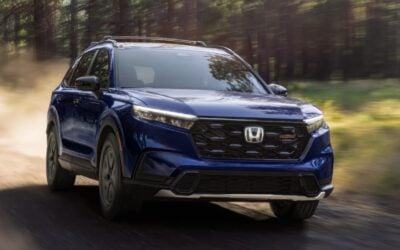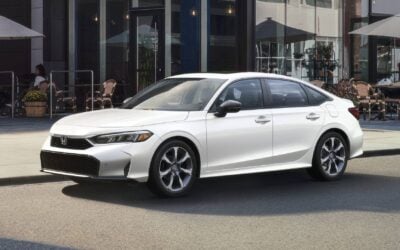Currently, there is a global shortage of new cars, trucks, and SUVs. Manufacturers like Ford, GM, and many others have been struggling for months to supply their dealerships with enough new inventory to keep up with demand.
Market days supply, a metric that sales managers and industry executives track religiously, is at historic lows. Dealerships typically carry a 60 to 90 days supply of inventory. This means that if a dealership did not receive another vehicle, they would have enough inventory to meet demand for 60 to 90 days. To paint a picture of how dire the situation is, Subaru currently has an 8 day supply of inventory. 8 days.
Get market days supply data for your area for FREE. Run a Market Price Report NOW!
Why is there a lack of supply? Because of an ongoing semiconductor shortage that has plagued the automotive industry for all of 2021, and likely into 2022.
The “chip shortage” as many are referring to it, and the subsequent new vehicle shortage have had ripple effects across the entire automotive industry. With fewer new vehicles available for sale, used car prices have skyrocketed. Used vehicles are worth 25% more right now than they were at this exact same time last year. Considering a car is a depreciating asset, that’s not supposed to happen.
It’s fair to say that we’re currently experiencing a seller’s market of unprecedented magnitude. That being said, many people find themselves in a position where they need to buy a vehicle. In that case, there are a few things to be aware of in advance of signing on the dotted line of your buyer’s order.
As we’ve learned from CarEdge Community members who work in dealerships and financial institutions, lenders are still financing vehicle purchases, even as loan to value ratios are severely out of whack. What impact will consumers face once the bubble bursts? Let’s unpack exactly that.
Become a FREE CarEdge MemberNegative equity
When you buy a car it depreciates. The exception to this rule has been 2021, however we expect that once new vehicle production returns to normal, all vehicles will depreciate as per usual.
Before the chip shortage, a car buyer could expect their new vehicle to depreciate about 20% in their first year of ownership. For many owners who financed their purchase, this meant that they likely owed more on their loan than what the vehicle’s market value is after one year.
How so? Consider this scenario.
If you bought a $40,000 car and it depreciates 20%, it’s worth $32,000 after one year. Even though the vehicle selling price was $40,000, you likely financed more than $40,000. This is because the selling price of a vehicle isn’t the actual, or total price you pay. The total price is what we refer to as the out the door (OTD) price. The OTD price includes all fees, taxes, and accessories. When you finance a vehicle you finance the OTD price, PLUS any ancillary products you purchase in the finance office (unless you purchase them in full upfront).
Now the OTD price before you go to the dealership. Use the FREE OTD Calculator NOW!
That means your loan amount will be more than the $40,000 selling price (unless of course you plan to pay taxes and fees in cash, or make a substantial down payment). Every state and locale has different tax codes (we calculate those for you in our free OTD Price Calculator!), and dealer fees vary from state to state (we’re looking at you Florida), but a general rule of thumb is that your OTD price will be 10% higher than the selling price of the vehicle.
That $40,000 purchase is actually a $44,000 purchase, and unless you’re putting some serious cash down, you can quickly see how you’ll be in a negative equity position the moment you drive off the dealership’s lot. Your loan is for $44,000 (with zero down), and the value of the vehicle you are purchasing (new) is $40,000. You’re already in a $4,000 negative equity position.
What we described above is a typical negative equity situation consumers would face last year (pre-pandemic). Our concern is what will inevitably happen to consumers in 12, 24, or 36 months from now. Their negative equity position will be magnitudes greater than the example we just shared.
What’s going on right now
New vehicles are frequently selling for thousands of dollars over MSRP. Consumers are buying and financing thousands of dollars of “additional dealer markup” simply because of the supply shortage. In 2021, on a new Kia Telluride with $8,000 in additional dealer markup, you may have financed $54,000 on a $40,000 MSRP vehicle. That’s a serious negative equity position!

That being said, many lenders are not approving loans without significant cash down payments. Lenders need to abide by loan to value ratios that make sense based on your credit score and history. However, from everyone we’ve met with, lenders are still lending, and somehow consumers are manufacturing a large enough down payment to justify getting a loan approved.
Right now, at this very moment, the new Kia Telluride you just bought brand new might actually be worth MORE now that it’s a used vehicle (what a crazy time we are living in), however that is exactly the “bubble” we are talking about. Everyone knows that the Kia Telluride you just bought with $8,000 in additional dealer markup isn’t actually worth more used than it was new. That’s the craziness of our current supply/demand imbalance.
Become a FREE CarEdge MemberSo what happens in 24 months when that Kia Telluride price has normalized and it has deprecated the way we all expect it to? The owner who financed that purchase is going to be looking at a sobering reality, their Telluride will be worth considerably less than what they owe on their current loan. If they want to move into a different vehicle they’ll have a tough pill to swallow.
The same reality is playing out in the used car market. With used vehicle prices highly inflated, consumers are financing purchases on used cars and trucks that aren’t worth as much as they appear to be right now. The negative equity position they’ll be in will be staggering. The first impact of the “bubble bursting” will be the reality that millions of Americans will owe thousands of dollars more on their auto loans than what their vehicle is actually worth. This will have some interesting effects on vehicle sales in the near future.
Understanding GAP Insurance right now is very important! Read our FREE guide to GAP Insurance.
Digital dealers are in for a surprise
By now you are likely familiar with massive “online” car dealers like Carvana, Vroom, and Shift. Each of these companies has gone public over the past few years, and with valuations north of $50B, each has a lot of money to invest in growing their business.
What’s interesting about their business model (and Carmax’s too) is that they make most of their money not selling cars, but on selling loans, and ancillary products (extended warranties) tied to the purchase of a vehicle. To sell a loan or an extended warranty, you have to sell a car. Selling a car is actually really expensive. You have to find a vehicle to buy, recondition it so that it’s “showroom” ready, and then market it for sale.
Even with all that overhead, there is enough money in loans and extended warranties (and occasionally in the actual sale of the vehicle) that they make money (or at least make enough money to justify raising more capital from investors).
As used car prices have skyrocketed, we’ve seen an intensified bidding war amongst the deep pocketed publicly traded used car dealers. We’ve documented for months how Carvana, Carmax, Vroom, and Shift are paying incredibly high prices for used vehicles. Remember, if they don’t have inventory, they can’t make money, and if they can’t make money, their investors won’t be happy. It’s a vicious cycle.
What happens when the bubble bursts and used vehicle prices fall? Each of these dealers will be looking at their portfolio of hundreds of thousands of VERY expensive cars they paid for that are NOT worth what they paid for them. Depending on how quickly prices fall, each of these companies could be looking at hundreds of millions of dollars in inventory that is worth less than what they paid for it.
In a “post bubble burst” world we’ll be looking at quarterly reports from each of these companies that discuss how they’ll need to offload inventory at a loss to free up cash to be able to purchase new inventory at a lower price. This practice is called cost averaging, and it’s inevitable it will happen. The companies that don’t handle this well will certainly suffer, and as consumers we may be able to benefit from some sort of “fire sale” if/when it happens.
There will be less in-market car buyers over the next five years
The third impact we see when the bubble bursts, is that there will likely be fewer in-market auto buyers. Like we discussed above, with expected negative equity positions to be very large, there will likely be a substantial number of buyers who take themselves out of the market when they realize that they owe thousands (if not tens of thousands) more on their current vehicle than what it is worth. We expect that many people will decide it makes more sense to hold onto their existing vehicle than “roll the negative equity” into a new loan and try to purchase another vehicle in 12, 24, or 36 months.
How can you protect yourself
If you need to buy a car in this market, there are a few things you can do to protect yourself.
Step one
Become educated about the market situation. Reading this article will help you, and we also suggest you watch a few of our recent YouTube videos to get up to speed.
Step two
Be aware of your local market conditions. Although the supply shortage is global in scope, be sure to understand your local market conditions by running a Market Price Report.
Step three
Get support negotiating with the dealer/seller. Post your OTD worksheet to the CarEdge Community Forum, or live chat with our Auto Advocates On Demand. No matter what, get a second set of eyes to review your deal before you sign the dotted line.
Step four
Get pre-approved for financing instead of relying on the dealer!
Step five
Be patient! We’ve heard from dozens of community members that they’re still able to get fair deals right now. It takes patience and persistence. You’ve got this.















Hello, Wasn’t your email templates available to free members? I remember reviewing them as a great option to order a truck. Are they now just under premium area.
Robert they still are! https://wordpress.caredge.kinsta.cloud/guides/email-templates-to-buy-a-car-online/
Hello, I just signed up and love what you guys are doing. I’m trying to get information on a 2021 Toyota Highlander hybrid, but you don’t seem to have the hybrid option available on your website. Any help would be appreciated.
Michael, welcome! Can you please reference the community forum or email our support team at “[email protected]”? Thank you!
https://community.CarEdgemember.com/home
All the best!
Zach,
I’m planning on buying a 2022 Toyota 4Runner for MSRP (the dealer tried adding a 1,500 markup but I stood firm…thanks to you and your dad) my question is if the lease option is still better if I’m not paying for a dealer markup and the 4Runner holds up its value pretty well. Thanks, Ed
PS. I’m already a member.😂
Ed, in that case either option makes a lot of sense. Thanks for being a part of CarEdge!
Cash will be king in the next 2 years as the bubbles burst……..just like 2009……